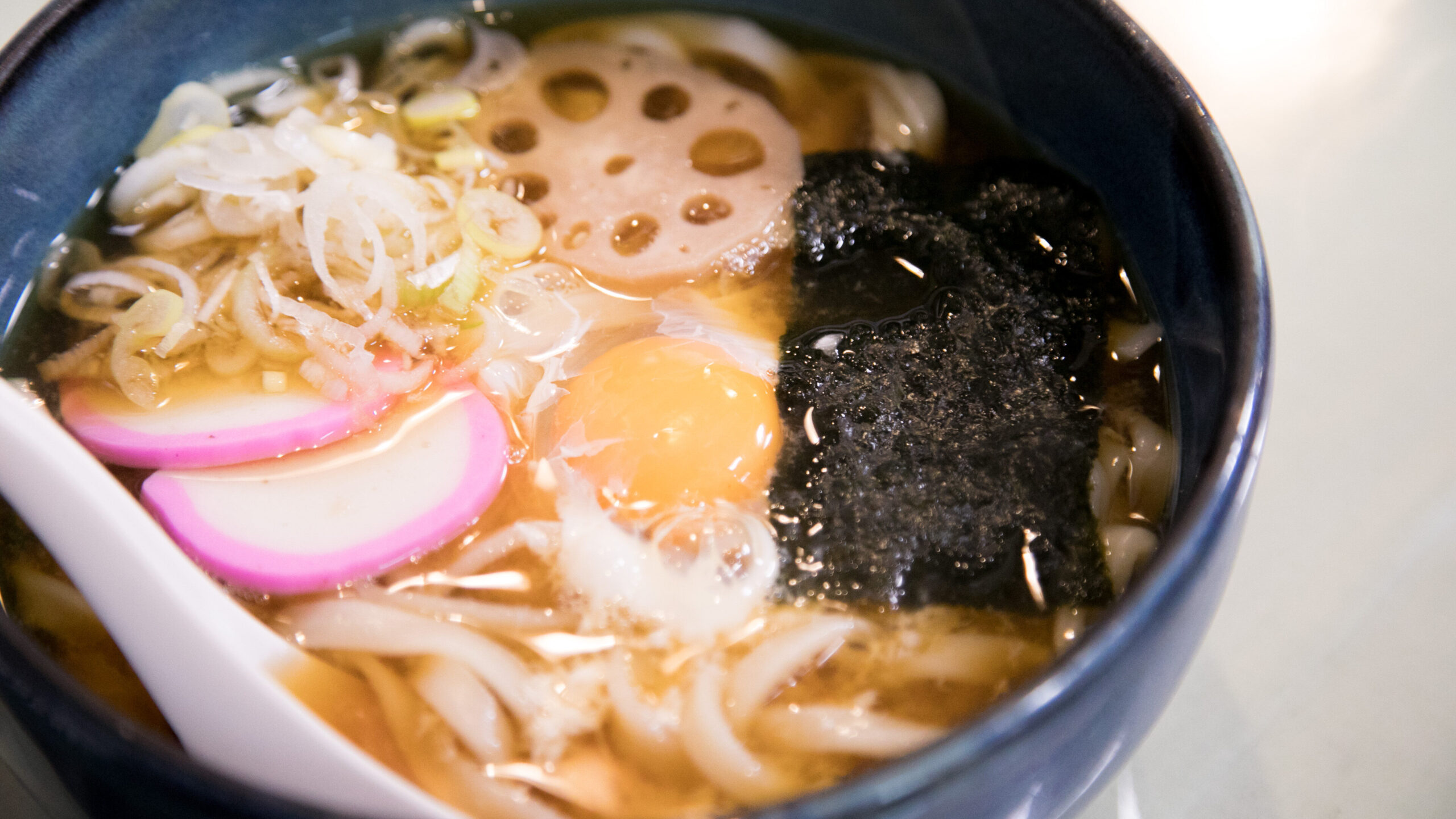
Alright, noodle lovers, get ready to slurp down some Kishimen! This is Aichi Prefecture’s soul food – a wide, flat udon noodle that’s a staple across the region. It’s got a cool history and a flavor that really hits the spot. Let’s dive in and learn more about this awesome dish.
Dish Name: Kishimen
- Region / Location: Aichi Prefecture (throughout the prefecture)
- Primary Area of Tradition: Aichi Prefecture
- Main Ingredients: Kishimen noodles
How It’s Eaten / Served
Kishimen is a type of flat udon noodle, about 1mm thick and 7 to 8mm wide. Generally, it’s eaten with frozen or dried noodles. Adding a slice of the red kamaboko (fish cake) that’s unique to Nagoya gives it an even more local touch.
Nowadays, in addition to the broth made with muroaji and tamari, it’s also often made with dashi broth and soy sauce. There are also many variations, such as “Curry Kishimen,” “Chikara Kishimen” with mochi (rice cake), and “Carbonara Kishimen.”
Besides the hot “Kishimen,” there’s also a cold version called “Koro,” where both the noodles and broth are chilled, and it’s enjoyed especially in the summer when people have less appetite.
Cultural Background and Preservation
It’s said that Kishimen originated from a flat udon noodle (called himokawa) that was a specialty of present-day Kariya City. There are various theories about the origin of the name “Kishimen,” but it’s said to come from “Goishi Men,” a Chinese snack. “Goishi Men” was made by kneading wheat flour, rolling it out flat, cutting it into go stone shapes with a bamboo tube, boiling it, and topping it with kinako (roasted soybean flour).
One of the reasons why Kishimen became so popular in Aichi Prefecture is said to be that the flat noodles absorb the broth better than regular udon, which suited the preference of the locals who like strong flavors.
In the traditional way of making it, the broth is seasoned with muroaji and tamari. This is said to be because the flat noodles tend to taste bland when you put them in your mouth, so the broth needed to have a strong flavor. Muroaji (round scad) is characterized by its strong, distinctive dashi (broth) compared to katsuo (bonito). While soy sauce is made from soybeans and wheat, tamari is made almost entirely from soybeans and has a hint of miso-like aroma and a unique fragrance. Combining this with the dashi creates a rich broth.
Today, you can easily find Kishimen noodles in supermarkets, making it easy to prepare at home. It’s also served in elementary school lunches.
Local udon restaurants and flour manufacturers are also carrying out various initiatives, such as a stamp rally for restaurant hopping.
Additional information:
- Himokawa (ひもかわ): A very wide and flat type of udon noodle.
- Muroaji (むろあじ): Round scad, a type of fish used to make dashi.
- Tamari (たまり): A type of Japanese soy sauce made almost entirely from soybeans.
- Kamaboko (かまぼこ): A type of cured fish cake.
- Kinako (きなこ): Roasted soybean flour.
The information about regional cuisine featured on this website (Piggy's Grandma of Japan) is summarized and adapted from the Ministry of Agriculture, Forestry and Fisheries of Japan (MAFF) website, "Our Regional Cuisines"Additional commentary is provided based on the unique experiences and perspectives of the site's editors.
The copyright for the original content regarding regional cuisine belongs to the Ministry of Agriculture, Forestry and Fisheries of Japan.
The summaries and adaptations published on this site are intended for informational purposes only. Piggy's Grandma of Japan does not guarantee the accuracy or completeness of this information. For the most accurate and complete details, please refer to the original pages on the MAFF website.

